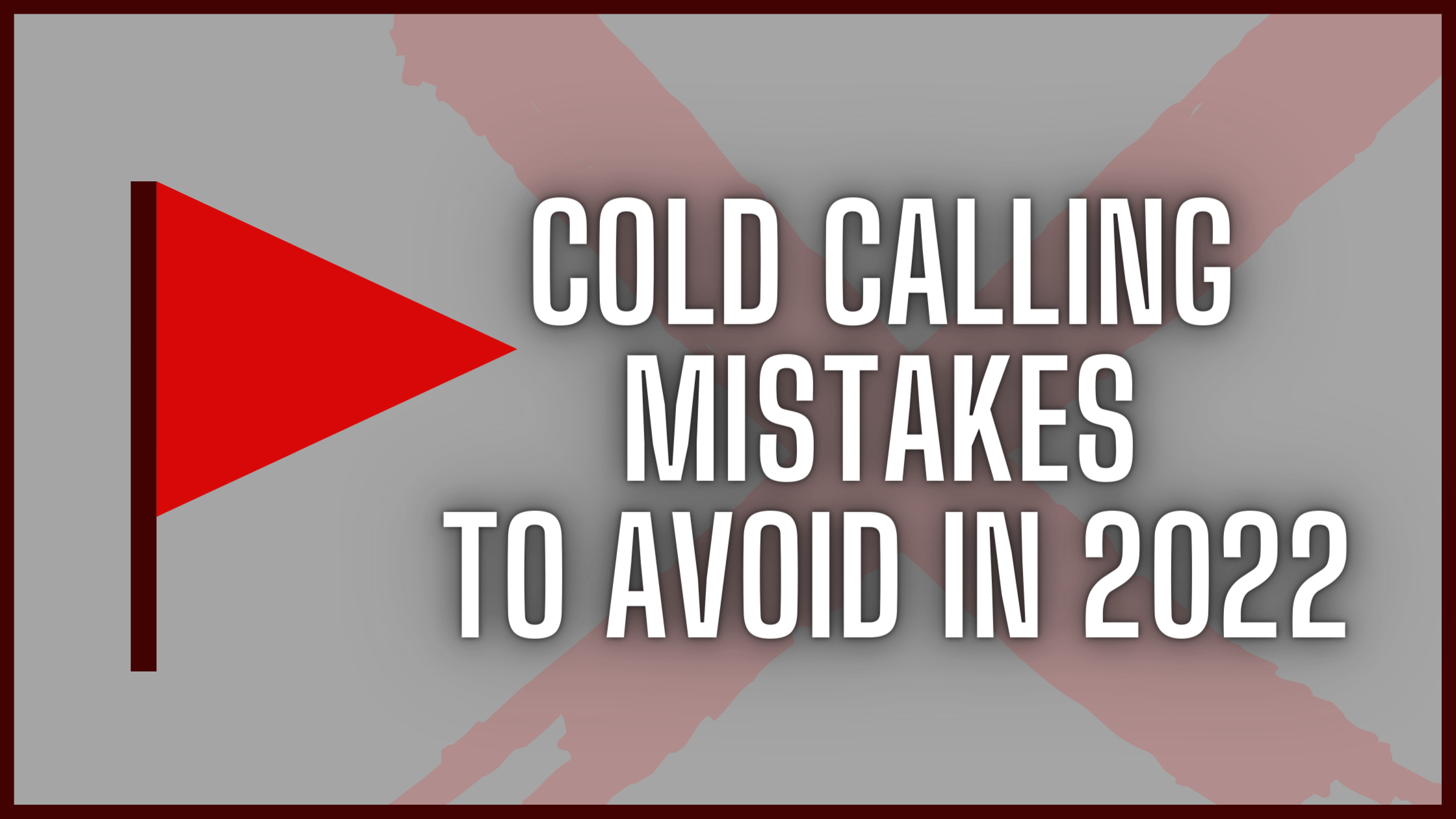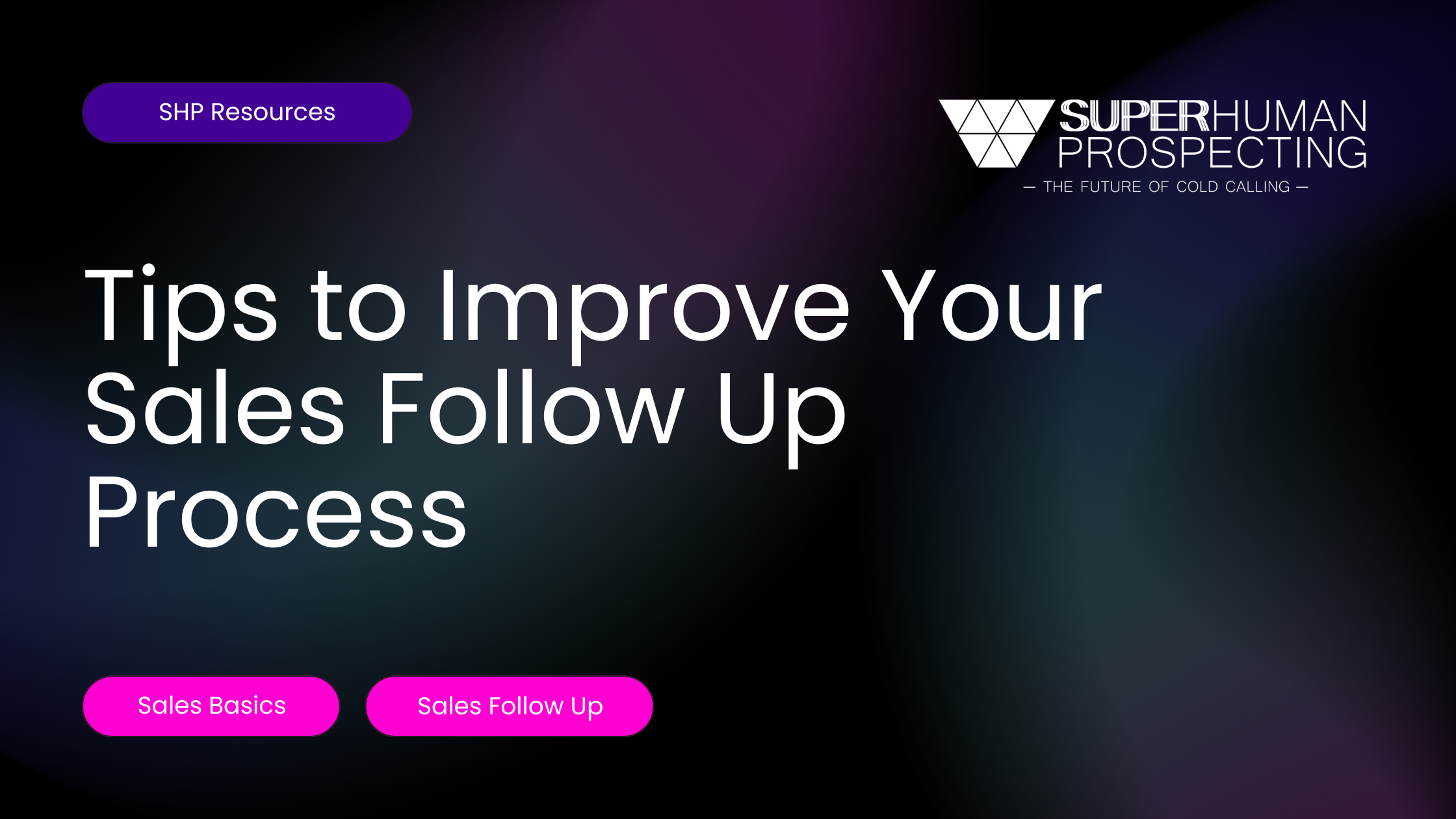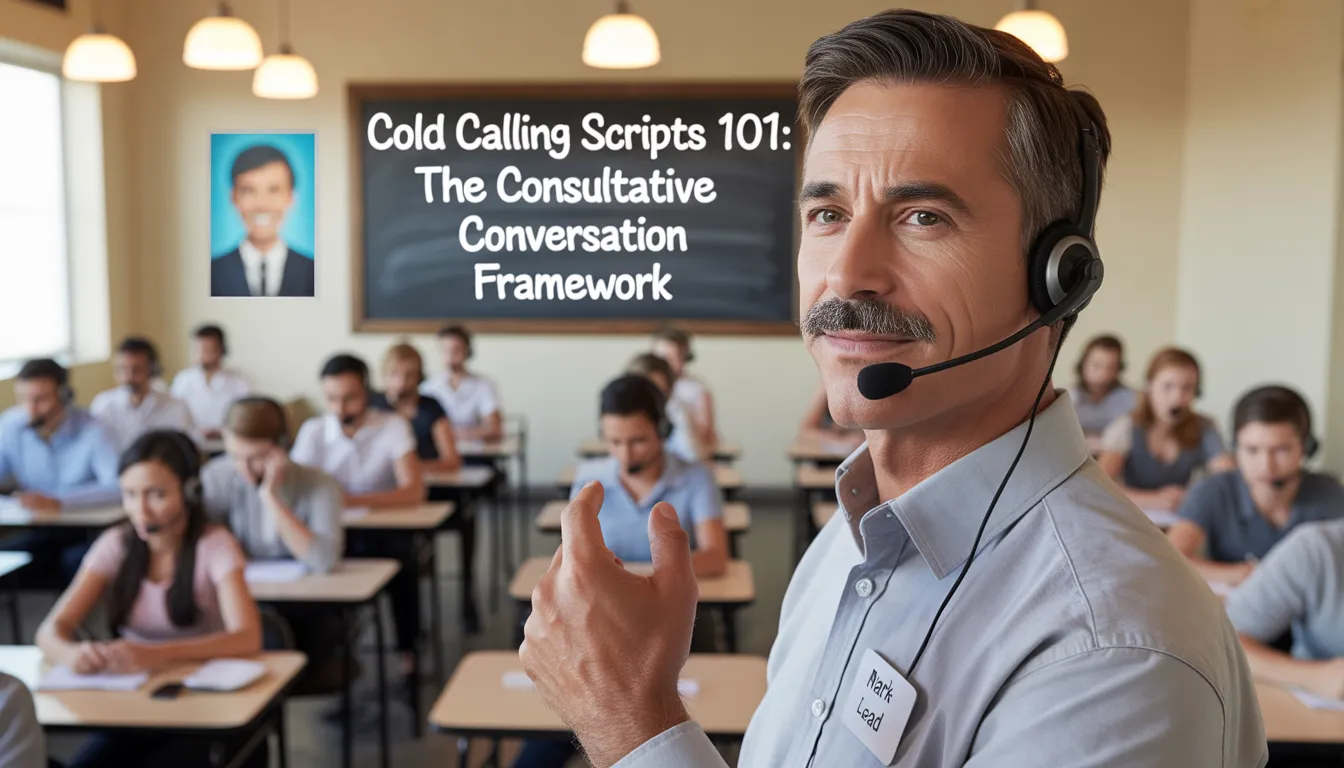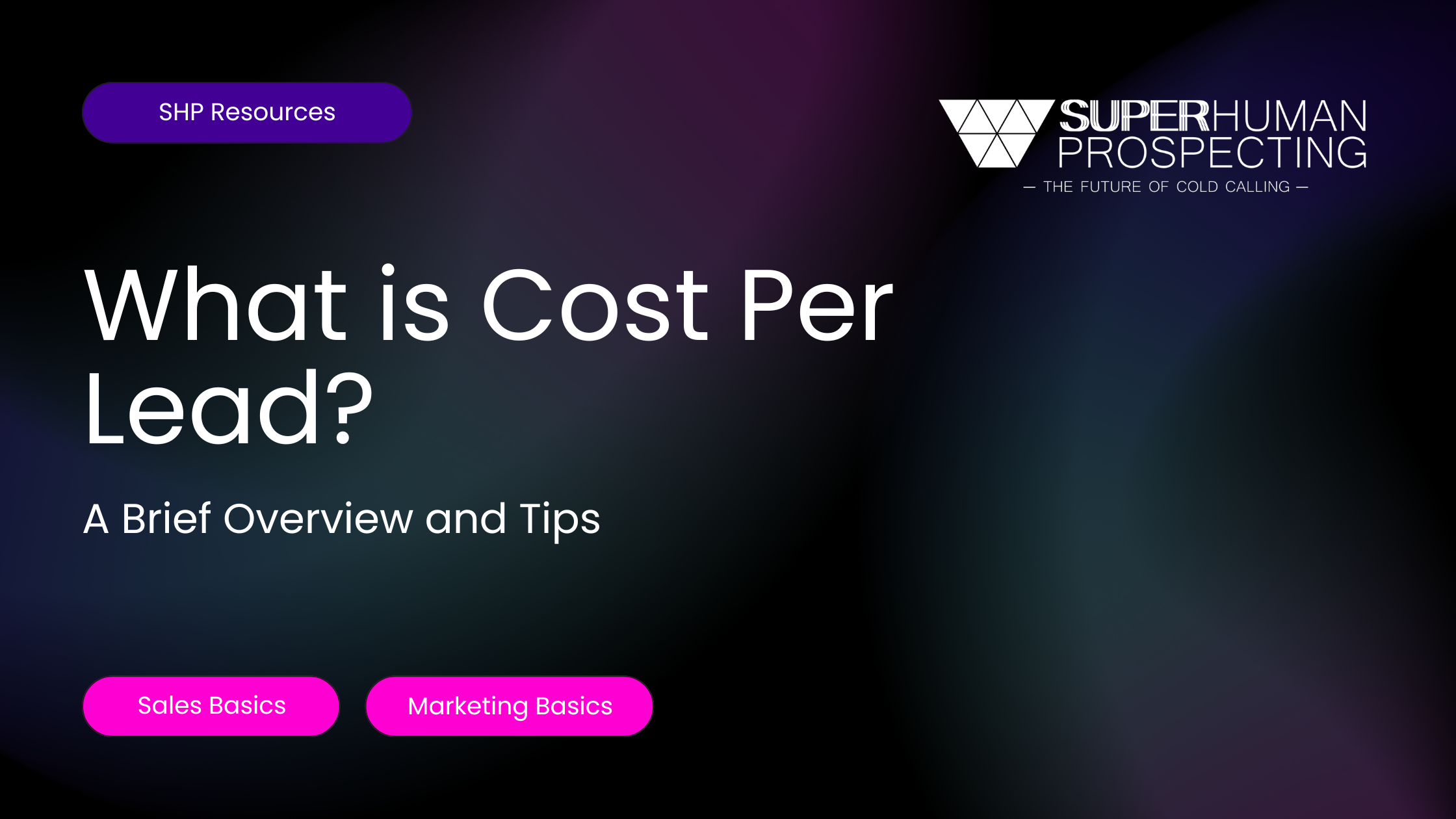Are you making these 🚩 mistakes on your cold calls?
Prospects in the 21st century see the red flags in your cold calls and they see them rather quickly. Once a cold phone call is made, and the person on the other end identifies in their mind this conversation might be a “sales call,” the natural law of buyer resistance kicks in.
Instinctively, the scarcity of resources (money) and the unlimited supply of products and services for purchase are at odds. After all, they don’t know your motive, what you’re selling, and what type of crazy tactic you might pull to take away a resource they use to survive.
It doesn’t matter if you are a seasoned sales professional or just starting out – if you are looking to gain your prospect’s trust, you should avoid these top cold calling red flags.
🚩Not Detailing your Ideal Customer Profile
Calling anyone you think might benefit from your offering will end up wasting a huge amount of your time and resources.
Understanding your ideal customer profiles and target audience is necessary for creating the most specific and relevant sales messaging.
Your target audience should be made up of people who share a common pain point, and who want to buy your products or services. You need to know exactly who you’re talking to, what company they work for, and the exact value your product can provide for them.
Use your ROI to determine your best current or past client. Why were they the best? Make note of their role in the company and how they benefited from your offering.
How do they use your offering?
What challenges do they face?
Who are the decision-makers in the process?
Who were the stakeholders?
What size of company are they in?
In what industry?
Use this market research to create buyer personas for each commonality. The more you can uncover, the more you can tailor your strategy and solution to meet their needs.
Tip: Remember to Reevaluate! If you have prospects constantly rescheduling meetings or saying they just aren’t ready to buy… you may need a different target market.
🚩 Using a Bad Contact List
Bad data is the enemy of lead generation. It’s costly and time-consuming. According to Synthio, B2B contacts in your CRM go bad at a rate of between 24-36% per year due to job changes, role changes, and everything in between. It’s important to make sure your prospecting list comes from a respected source for correct, up-to-date information.
Building quality lists on your own can be difficult, but there are plenty of databases, platforms, and tools that can help provide more effective targets. List building software like LinkedIn or Hubspot can help you actively look up and compare prospects while finding out more about them and their company. Other tools, such as a variety of chrome extensions, can help you collect historical data or contacts from previous campaigns, or directly from your website and social media platforms.
If you are looking to build a more specific B2B contact list, you may need to think about hiring or outsourcing your list to expert, manual researchers. Human verified data will always give you the best result.
What should your contact list include?
Ours include multiple touchpoints, such as:
- Target Client Profiles
- Public, Private or Government Funded
- Titles of Target Contacts
- Geographical Locations
- Industry or SIC code
- Employee Size
- Annual Sales Volume
- Specific Target Companies
- Any Other Custom Criteria
At Superhuman Prospecting, we use the 3-prong approach for building a prospect list. This means using a variety of B2B contact databases, AI technology, web scraping tools, and expert researchers to build custom leads lists for our clients.
🚩Not Following a Sales Script or Framework
A well-written sales script is a valuable tool that can help guide the right language, information, and structure needed to have the best conversation possible.
Having this framework gives you the ability to measure results and create a standard that can help you improve your cold calling techniques and messaging. And despite all of the reasons that critics may cite, sales scripts are widely used and coveted as a major marketing strategy for both large and small companies.
Think of it more like a small research project on your offering. By training your team to use a sales script, you ensure everyone is following the same protocols and selling the same message.
You’re not only locking down what your workers are saying; you’re ensuring consistency within your own brand. The script keeps all of your valuable information close by and ready for action in an easy-to-follow conversation format. It’s the perfect little cheat sheet.
Need help writing your script? We talk a lot (a lot) about how to create a custom cold calling script based on your industry and offering. Visit H2H Sales Script Methodology to learn more about creating custom sales scripts for your business.
🚩Putting Profit Over People
This is a big mistake. Cold calling is about building trust. You can’t build trust if you are pushy and aggressive. We’ve made over 500,000 cold calls in 2021 with 3 months left. Our best sales reps know how to diffuse the anxiety of the buyer and eliminate the pressure to buy, while still aiming for the highest results. It’s assertive, but not aggressive.
This is important to understand as it helps position our mind to focus on the results, while never engaging in activities that may endanger the relationship with the prospect we are selling to.
Because of poor sales ethics of a past era, we have to redefine what high-performing behaviors look like in 2022 and beyond.
If telling the truth and being honest is common sense in this picture, there is a line of action we have to define, and not cross, when we’re in selling situations. Defining specific values to live by ensures that any action we take within our creative freedom in selling doesn’t overstep these fundamental laws.
Understanding the salesperson stigma will help speed trust in other ways, but understanding how to design a sales conversation around a sensible goal is paramount to converting at the highest levels while increasing trust with your prospects.
These are our selling values…what are yours?
Slow the Process, Speed the Trust
Assertive, Not Aggressive
Fierce, Not Harmful
Confident, Not Conceited
Encouraging, Not Pushy
Utilize Emotional Intelligence
🚩 Not Managing (or Leveraging) Your Data Properly
One of the biggest problems we see clients face is not knowing how to properly manage all of their data.
What is your average deal size?
What percentage of new opportunities result in new customers?
How long does it take to close new business from top of the funnel operations?
Most of the time, these companies will have an idea of what they want to accomplish, but their systems and software are a mess, with no real customer journey or strategy in place.
Your sales tech stack is an important piece of the lead generation process and the key to answering these questions. Whether you’re an SDR, AE, or in Business Development, properly managing your data can lead to better productivity and results. It can also help you stay compliant and consistent in front of your target audience.
The core differences between CRMs and sales engagement platforms are the teams that they serve and the activity they enable. Customer Relationship Management (CRM) systems are commonly known as the primary database for all of your customer interactions. They track all of the activities involved with collecting and converting leads into opportunities and are key for managing your relationships.
Darryl Praill, CMO of VanillaSoft says, “Most sales professionals will admit that they struggle to convert leads using CRM alone. The truth is that CRMs are not ideal for efficient lead qualification because, let’s keep in mind, they were designed for managing relationships.” To be more effective with your data, you should think about adding a sales engagement solution.
While measuring your sales activity is one piece of the puzzle, you also have your call analytics, which will help you evaluate the overall success of these types of phone calls. Coupled with bonuses like call recordings, you better leverage the success of your scripts or your different team members’ techniques for better quality cold calls.
🚩 Not Refining Your Strategy
Remember: “What gets measured, gets managed.” It is important to make sure you define the most critical elements of your sales cycle by focusing on what determines a lead or opportunity and what steps are taken to move leads through the funnel.
Use your data to identify the tactics that convert leads at a higher rate and then train your salespeople on those steps to ensure they understand what steps work best.
(Sorry, but smiling and dialing doesn’t count as an actual strategy.) You need to be setting S.M.A.R.T. goals and making sure you achieve them. Even if your strategy is working, we’ve found even small refinements can often lead to better results.
Start by looking at your processes and note areas of weakness or opportunity. Is your prospect list not a good fit? Maybe your script needs updating? Has your position in the marketplace changed? Use feedback from your current strategy to make necessary changes and improvements.
Through conversations with your ideal customers, you will be able to identify and correct missed opportunities for showing value. Think of it as a gradual testing market. Use the feedback to improve any sales language and listen for root issues you can help solve. Reassess your outbound strategy and make sure that you’re still on the right track, especially as your offerings change and opportunities develop.
🚩Not Making Enough Calls
Rejections suck. But they are bound to happen in cold calling. I once heard someone refer to cold calling like the lottery. You have to play to win. And you most likely have to keep playing (and playing) to increase your chances of winning.
Cold calling is basically the same. If cold calls are a part of your sales strategy, be prepared to hear multiple rejections in a row before getting your “win.” No matter how many times you don’t get the appointment or next steps, you should keep calling. You have to learn to develop tough skin and not take it personally.
But be careful not to lose quality in the race for quantity. If you can learn how to counter the most popular objections to rejecting your call, you will feel more prepared and confident on the phone. Most times, when we feel prepared and confident, we are able to deliver a better message, resulting in better cold calls for everyone.
🚩Not Being Yourself on a Cold Call
Making a connection and differentiating yourself on cold calls remains a crucial skill. The goal is to have a quality conversation – the best way to do this is to be yourself!
Practice makes perfect, so role-playing and recording yourself on the phone can lead to some major call improvements. Have anxiety before a call? Do something to lift your spirits and get your head out of that frame of mind.
Did you know more than 70% of communication stems from our non-verbals?
Getting your blood flowing can help you think more clearly and stay focused while on the call. So, stand up, walk around, meditate, do yoga, or listen to music – just do whatever puts you in that mood to be positive, helpful, and focused.








